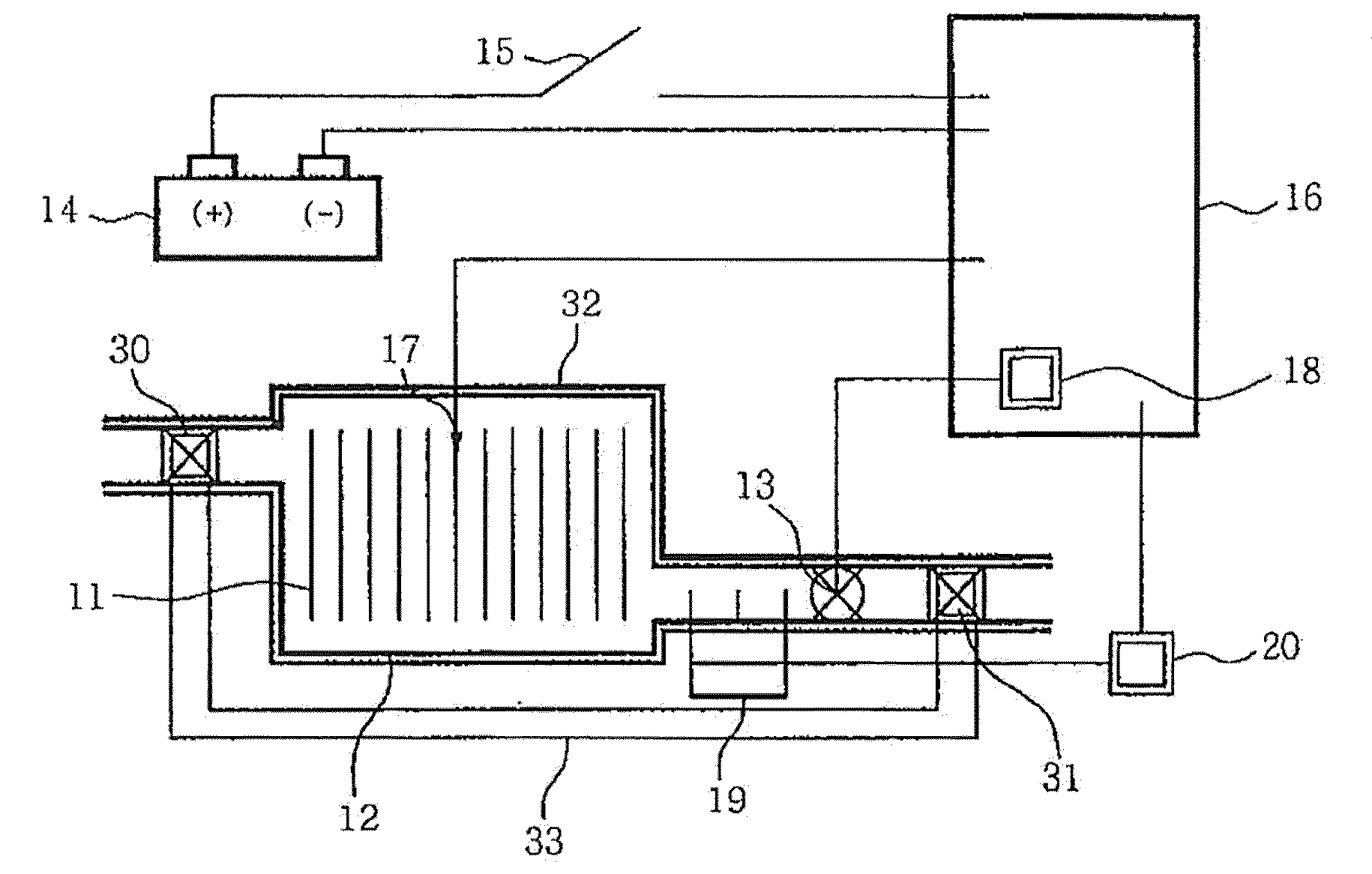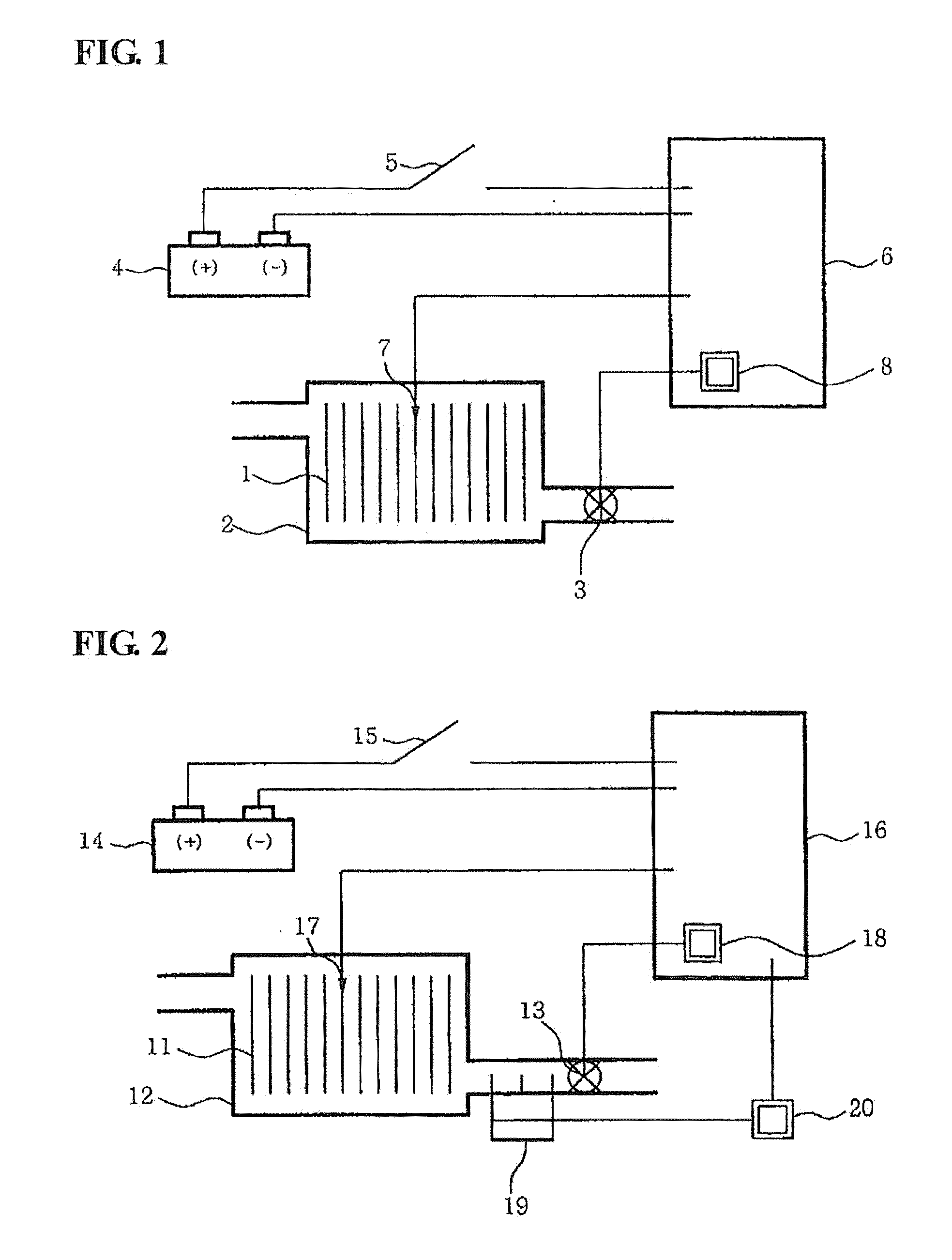Battery temperature controller for electric vehicle using thermoelectric semiconductor
a technology of thermoelectric semiconductors and electric vehicles, applied in cell temperature control, electric devices, electrochemical generators, etc., can solve the problems of low battery performance, delay, high battery energy, etc., and achieve noise and vibration, easy implementation, and optimal performance.
- Summary
- Abstract
- Description
- Claims
- Application Information
AI Technical Summary
Benefits of technology
Problems solved by technology
Method used
Image
Examples
Embodiment Construction
[0054]Meanwhile, a device for controlling the temperature of batteries for electric vehicles using thermoelectric semiconductor elements according to another embodiment of the present invention is described in detail with reference to FIG. 3 below.
[0055]FIG. 3 is a diagram showing the construction of the device for controlling the temperature of batteries for electric vehicles using thermoelectric semiconductor elements according to another embodiment of the present invention.
[0056]Referring to FIG. 3, the device for controlling the temperature of batteries for electric vehicles using thermoelectric semiconductor elements according to the embodiment of the present invention includes a plurality of batteries 11, a battery tray 12, a cooling fan 13, an auxiliary battery 14, a starting switch 15, a battery controller 16, a temperature sensor 17, a relay 18, a thermoelectric semiconductor unit 19, a thermoelectric semiconductor unit controller 20, an inlet three-way valve 30, an outlet ...
PUM
 Login to View More
Login to View More Abstract
Description
Claims
Application Information
 Login to View More
Login to View More - R&D
- Intellectual Property
- Life Sciences
- Materials
- Tech Scout
- Unparalleled Data Quality
- Higher Quality Content
- 60% Fewer Hallucinations
Browse by: Latest US Patents, China's latest patents, Technical Efficacy Thesaurus, Application Domain, Technology Topic, Popular Technical Reports.
© 2025 PatSnap. All rights reserved.Legal|Privacy policy|Modern Slavery Act Transparency Statement|Sitemap|About US| Contact US: help@patsnap.com



